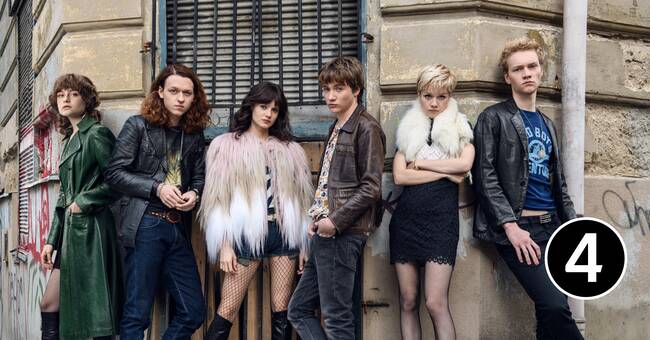We children from
Bahnhof Zoo
came in 1981 as a bold social-realistic bang right on the folk home's self-evidently protruding chin.
No, the film did not take place in Sweden but it felt that way.
Near.
Nasty.
True.
Staffan Hildebrandt tried a few years later to do something that can be seen as a Swedish variant with (the then sawn but then declared cult) G - as in community, but did not even come close to his German predecessor who pulsated with credible life.
And by David Bowie's superb music from the Berlin years.
It has been 40 years since then and a review shows that it still holds.
Okay, to some extent thanks to the nostalgia of the reunion (and Bowie's participation) but the theme is constantly relevant;
because even though drug use among young people looks different nowadays, it has hardly become less frequent.
The first
film adaptation focused on Christiane F's rapid fall from a 12-year-old schoolgirl to a 13-year-old prostitute drug addict, but to fill all eight episodes of the series, the gallery has been expanded with five more young people from different social classes, all of whom are somehow let down by the adult world and therefore looking for themselves in the dark corners of the city.
Philipp Kadelbach and the other series creators are close to Christiane F's autobiographical original story, but have nevertheless done something completely their own.
Not least, the visuals have been really pumped up, there is a daring but successful balance between realism and lighter surrealism where miserable everyday life and washed-out 80s aesthetics are mixed with dream sequences and nicely augmented reality.
The image work is
confident.
Here, at least, no old drug realism should come and determine the framework.
The cartoonists instead give us nice and imaginative stage transitions and release an extra drop of acid on reality by making it enigmatically anachronistic;
in scenography and costume, but not least in the music, where you mix old Bowie with modern dance music.
There is also an exciting clash between young people's lack of consequential thinking and the harsh reality.
In the middle of the misery, we see a few moments of a kind of posing coolness.
In one of the most bizarre scenes, some speeded girls go in a brave armpit to sell sex on the street.
So a kind of twisted Girl power scene that is really completely hopeless and may provoke sensitive viewers.
But it is narratively clever - we become, so to speak, sucked into the main characters' distorted self-images.
Common
drug portrayal usually concentrates on the dirty, hopeless, disgusting, which means that it can sometimes be difficult to really understand the drug's appeal.
This was actually the case with the film from 1981, but the series dares to show the allure of intoxication and the escape from reality it offers - even if it never lets us forget that the terminus is a cannula in the armpit of a pissed-off toilet.
Premiere 28/2 on Viaplay.

